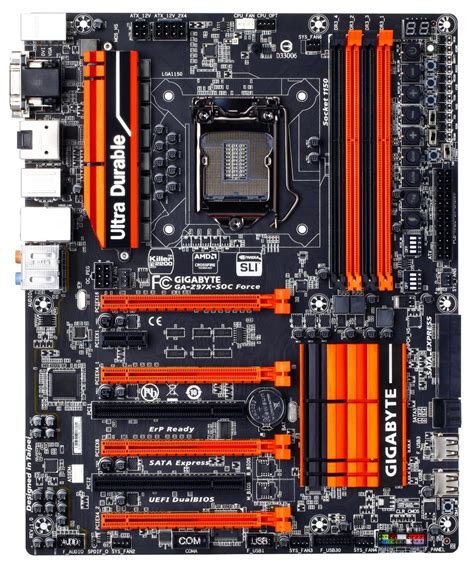Introduction
Have you ever wondered why motherboards and other printed circuit boards (PCBs) are typically green in color? It’s not just a random design choice – there’s actually a scientific reason behind this distinctive hue. In this article, we’ll explore the secrets of PCB Colors and delve into the fascinating world of motherboard manufacturing.
What is a Motherboard?
A motherboard is the central printed circuit board in a computer system. It serves as the backbone that connects all the various components, including the CPU, RAM, storage drives, expansion cards, and peripherals. The motherboard provides power and enables communication between these parts.
The Basics of PCB Manufacturing
To understand why motherboards are green, let’s first look at how PCBs are made:
-
Design: The circuit layout is designed using specialized software.
-
Material Selection: A base material, usually fiberglass, is chosen for the board. Copper foil is laminated onto this substrate.
-
Etching: The unwanted copper is etched away, leaving behind the desired circuit pattern.
-
Drilling: Holes are drilled for through-hole components and vias that connect different layers.
-
Plating & Coating: The board undergoes plating to prevent copper oxidation. A solder mask is applied, giving the PCB its characteristic green color.
-
Silkscreen: White text labels and symbols are printed onto the board.
-
Surface Mount Assembly: Surface mount devices (SMDs) are soldered onto the PCB.
-
Inspection & Testing: The assembled board is rigorously inspected and tested for defects.

The Science Behind Green Solder Masks
Now let’s get to the heart of the matter – why are most motherboards green? The answer lies in the solder mask coating applied during manufacturing.
What is a Solder Mask?
A solder mask is a thin polymer layer that coats the copper traces on a PCB. Its main functions are:
- Preventing solder bridges from forming between closely spaced pads
- Protecting the copper from oxidation and corrosion
- Providing electrical insulation
- Improving the board’s appearance
Why Green?
Historically, PCB Manufacturers used various solder mask colors including red, yellow, blue, black, and of course, green. However, green eventually became the industry standard for several reasons:
-
Visibility: Green provides excellent contrast against the white silkscreen labels printed on the PCB. This enhances readability for assembly and debugging. Other colors like blue or black can make it harder to see these markings.
-
Inspection: Automated optical inspection (AOI) systems, which check for manufacturing defects, work best with green solder masks. The cameras are sensitive to the light reflected by green, making it easier to spot issues.
-
Temperature Resistance: Some green solder masks are formulated to withstand higher temperatures during soldering. This durability is essential for the multi-layer boards common in motherboard designs.
-
Tradition: With the proliferation of green boards over time, it’s become an expected aesthetic in the electronics industry. Consumers associate green with high-quality, reliable PCBs.
Are All Solder Masks Green?
While green dominates, not all PCBs use this color solder mask. You might encounter these varieties:
| Color | Typical Use |
|---|---|
| Red | Older, lower-cost consumer electronics |
| Yellow | Some industrial & automotive applications |
| Blue | High-end consumer electronics, aerospace |
| Black | Luxury electronics, gaming motherboards |
| White | LED lighting boards for enhanced brightness |
Color choice depends on the specific application, design considerations, and the manufacturer’s capabilities. High-contrast colors are preferable when readability is critical.
Frequently Asked Questions
-
Are green PCBs environmentally friendly?
Not necessarily. The green color comes from the solder mask, not the base material. To be eco-friendly, a PCB needs to use lead-free solder and minimize toxic chemicals in the substrate. -
Do different shades of green affect performance?
No, the exact shade of green is cosmetic and doesn’t impact the motherboard’s functionality. However, consistency in color is important for automated inspection. -
Can I custom-order motherboards in other colors?
For large volume orders, some manufacturers may accommodate color requests. However, this would be prohibitively expensive for individual consumers. -
Do non-green solder masks change a motherboard’s capabilities?
Generally no, the solder mask color alone won’t affect performance. The board’s specs are determined by its design, components, and quality control. -
Will green always be the default color for motherboards?
Green is likely to remain prevalent due to its proven benefits for inspection and the industry’s familiarity with it. That said, as manufacturing processes evolve, we may see more color variety become cost-effective and practical.
Conclusion
The humble green motherboard is a marvel of engineering, materials science, and mass production. Far from being a stylistic whim, its signature emerald hue serves important functional purposes that enhance quality control and user-friendliness.
Next time you peek inside your computer case, take a moment to appreciate the complex interplay of design, chemistry, and optics that goes into PCB Fabrication. The green motherboard is a testament to the ingenuity and optimization behind the devices we often take for granted.
From consumer gadgets to aerospace systems, these unassuming green boards are the unsung heroes powering our increasingly connected world. So here’s to the mighty motherboard, in all its viridescent glory!






Leave a Reply